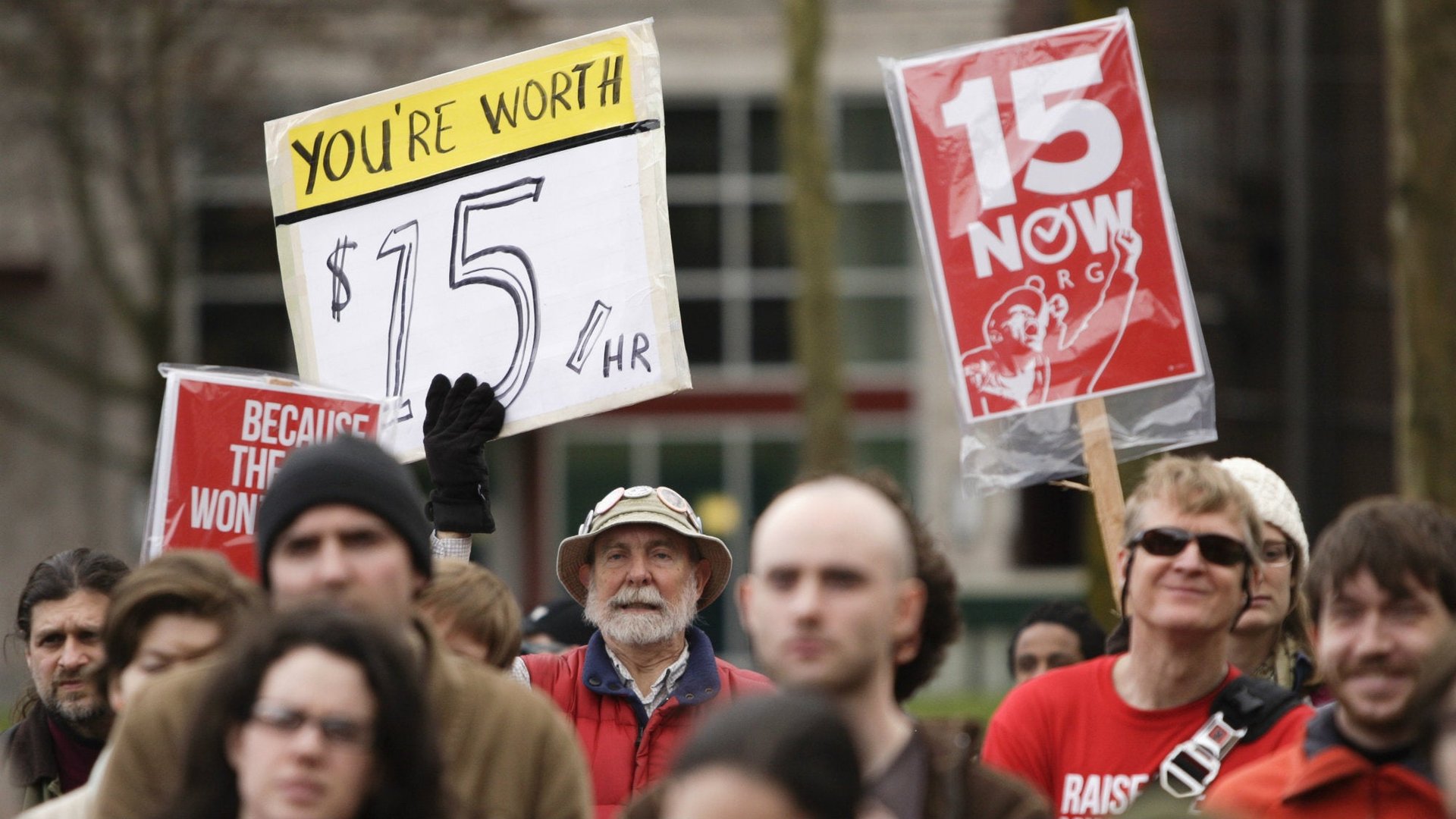Who will pay for a $15 minimum wage?
Too many Americans aren’t paid enough to enjoy a decent standard of living. That is unacceptable in a country as rich as the US. California and New York plan to phase in a $15-per-hour minimum wage over the next few years, amid a push for $15 to also be set as the national minimum wage, from $7.25 today.


Too many Americans aren’t paid enough to enjoy a decent standard of living. That is unacceptable in a country as rich as the US. California and New York plan to phase in a $15-per-hour minimum wage over the next few years, amid a push for $15 to also be set as the national minimum wage, from $7.25 today.
This is the wrong way to solve the problem. It’s not just that a wage increase that large risks job losses, but if the goal is a fairer distribution of income between rich and poor, then the minimum wage is a lousy way to achieve it.
Sadly, the money to pay low-wage workers more has to come from somewhere. It can either come from the savings that result from cutting jobs or hours, from dipping into profits, or by raising prices. Even pro-minimum wage economists worry that $15-per-hour goes too far and risks job losses.
What about profits? Some, like White House economist Jason Furman, believe minimum-wage employers pay their workers less than they are worth, so higher wages can come from lower profits. But according to official statistics, about one-third of minimum-wage workers are employed by small businesses (employing fewer than 50 people), mostly in the retail and food sector. Many others work for independently owned franchises of big brands, like McDonald’s or 7-11. These sorts of firms earn small profits—a survey of food-franchise owners found that half of them make $50,000 or less in annual earnings.
That leaves prices. A study of a large minimum-wage hike in Hungary (pdf) concluded that the higher wages mostly resulted in higher prices. Research in America (pdf) suggests that every 1% increase in the minimum wage boosts prices by 0.04% to 0.40%.
Higher prices impact everyone, rich and poor alike. For this reason, Stanford economist Thomas MaCurdy argues that a minimum-wage hike is similar to a rise in the sales tax rate. He studied a US minimum-wage hike in 1996—an increase from $4.25 to $5.15 per hour—and concluded that the resulting rise in prices amounted to a 0.59% tax on all low earners. The effective tax was lower for high earners, because the extra money they had to spend accounted for a lower share of their wallets. So it’s not just a higher sales tax, but a regressive one as well.
These may not sound like large increases, but MaCurdy’s study considered a relatively modest increase during a booming economy; the equivalent today would boost the minimum wage to $8.8o per hour. Pushing the minimum wage to $15 is a much bigger increase amidst a weaker economy—presumably, the accompanying price increases and additional burden on low earners would be larger too.
It is possible to take money from high earners and give it to minimum-wage earners more directly, without making the lower and middle classes pay too. Most economists champion the Earned Income Tax Credit, which reduces or refunds taxes owed by low-earning families. Not only does this avoid putting jobs at risk, it targets the families most in need and shifts tax revenue (collected from a progressive tax system) to those who need it most.
In many ways, it is ironic that both free college tuition and a $15 minimum wage are key parts of progressive presidential hopeful Bernie Sander’s economic policy prescriptions. Neither are very effective at redistributing from the rich to the poor—quite the opposite.